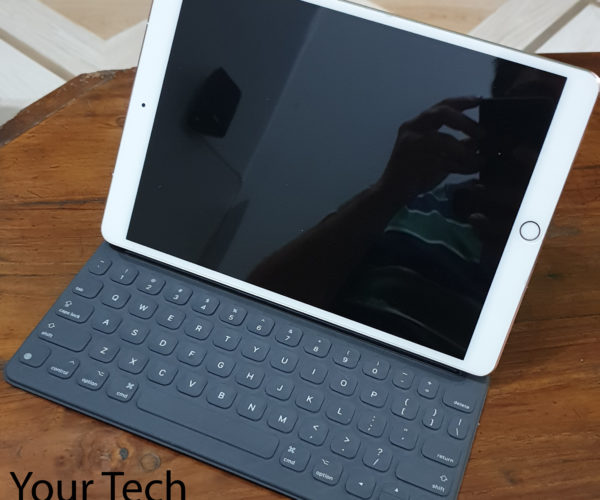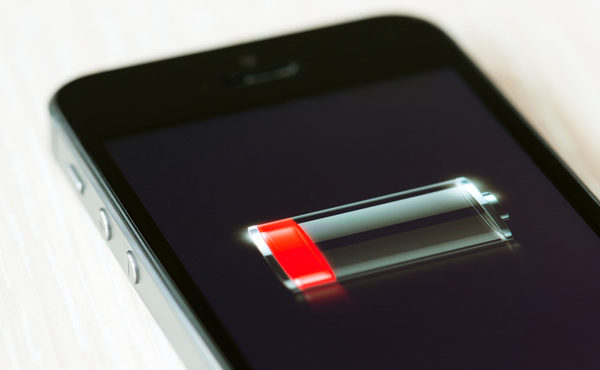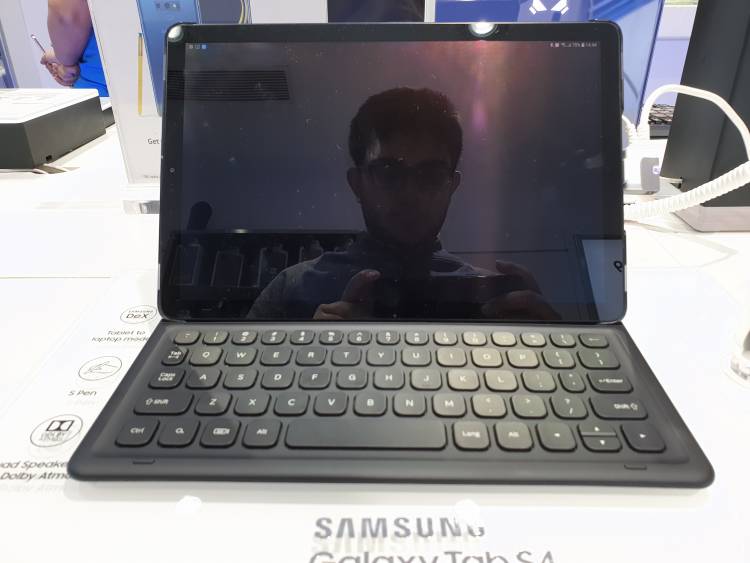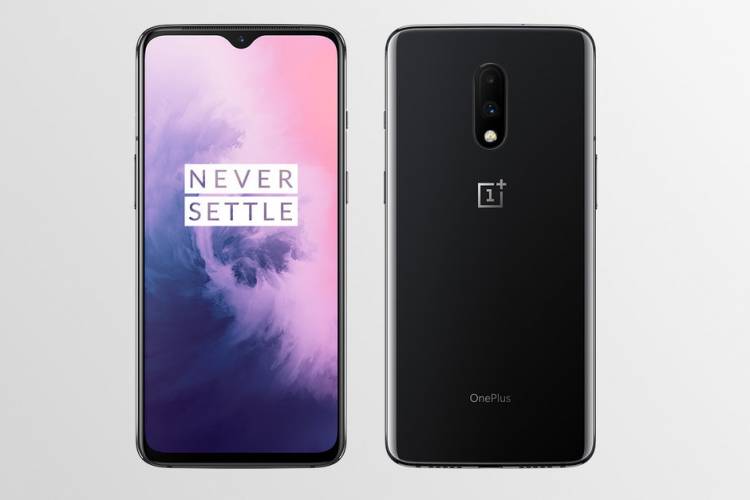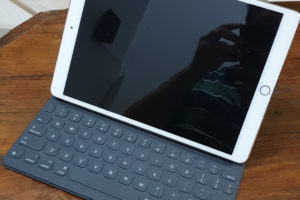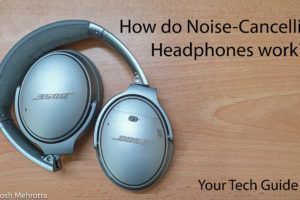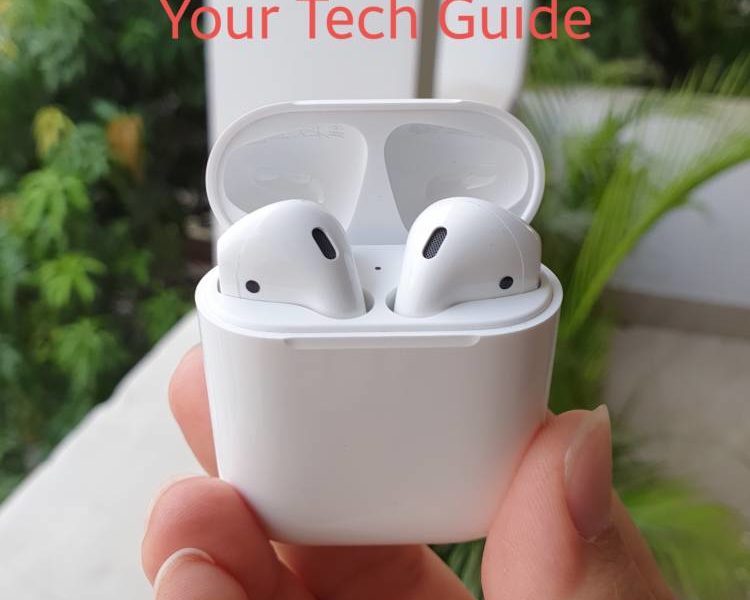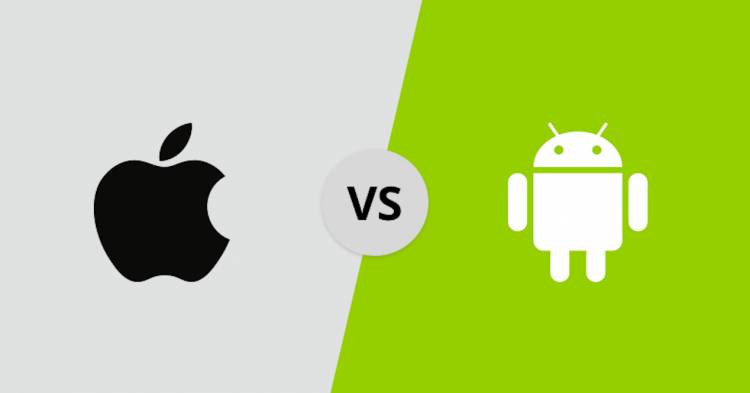Do you remember the time the TVs used to be those with big and heavy Cathode Ray Tubes (CRTs)? The largest ones used to be almost the size of an oven and too heavy to lift manually. After CRTs came Liquid Crystal Displays (LCDs), and the TVs lost a lot of weight and reduced their size. LEDs or Light Emitting Diodes were not so different from LCDs, though more power efficient. True evolution came with OLED or Organic Light Emitting Diode displays, with their exceptional quality and remarkable thinness.
Let’s have a look at what OLEDs are and how they work.
What is OLED?
OLED stands for Organic Light Emitting Diode. They consist of organic compounds which emit light when an electric current is passed through them. This results in the OLED displays being exceptionally light and with high contrast ratios.
How did LED displays work?
Let’s first understand the working of LED displays.
Think of an LED as a sandwich of two slabs of semiconductor materials (usually Germanium and Silicon are used). One of these semiconductors is slightly richer in electrons, and thus negatively charged, and is called as n-type. The other semiconductor is slightly deficient in electrons, or inversely richer in protons (known as holes) and thus positively charged, and is called p-type.

When we join these two materials (n-type and p-type), we get a zone in-between the two slabs where no charge is present, in other words you get a electrical no-mans land which is neutral. This is due to the electrons and holes cancelling each other out while passing over the no-mans land.
When we connect an electrical circuit to the sandwich of the semiconductor slabs and pass the current in a specific direction, electrons jump over from the n-type side to the p-type side. This electron jump leads to the release of a photon (particle of light) from the p-type side.
OLEDs work similar to LEDs but the two semiconductor slabs are replaced with organic material.
What makes up an OLED panel?
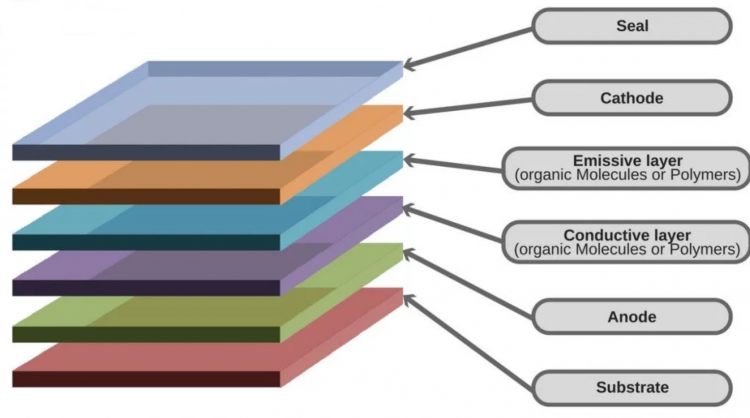
An Organic LED panel is made up of six different material, each serving a different purpose. on the top and bottom is a layer is glass or plastic which acts as a protective layer and protects the delicate inner layers from suffering damage. The top layer is caller Seal and the bottom one is called Substrate. Next to the top Seal is the negative terminal called the Cathode, with the positive terminal,Anode, next to the Substrate. Between the Anode and Cathode are two organic layers called the Emissive layer (where light is generated, and is next to the Cathode) and the Conductive layer (which is next to the Anode).
How OLED emits light?
When we connect an electrical circuit with the positive terminal of the circuit with the Anode and the negative terminal with the Cathode, electrons received by the Cathode while Anode loses electrons (or gains holes in other words).
This movement of electrons leads to the Emissive layer having a higher density of electrons and thus being negatively charged, while the Conductive layer as a positive charge with higher density of holes. This situation is just like the one with the n-type and p-type semiconductor materials.
With the holes being lighter and more mobile compared to the electrons, they jump over to the Emissive layer which is richer in electrons. When a hole meets with an electron, they cancel each other out, leading to the release of energy as a particle of light called Photon. This process is called Recombination and happens continuously thus producing a steady stream of light.
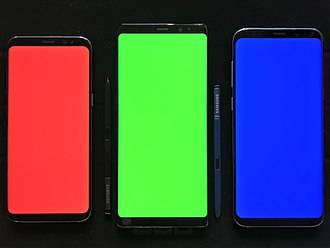
Why OLEDs are preferred?
When compared to conventional LEDs or LCDs, OLEDs give many advantages. From a purely customer centric view, they offer a much higher contrast ratio and very vibrant colours. They also have very deep blacks and do not need a backlight, thus consume much less energy compared to LCDs. They also have a very high refresh rate, as much as 200 times as that of conventional LCDs. They also produce truer colours and exceptional viewing angles, and are much cheaper to make than LCDs.
Thus, we saw how an OLED display actually works, and how it compares with other display technologies like LEDs and LCDs.
Do share your views in the comment section below. Cheers!
Other Posts
Bose QuiteComfort 35 ii – old but still gold
The Bose QuiteComfort 35 ii had one of the best designs that I’ve seen I headphones. The design looks simple, though very elegant. The headphones definitely get the Bose DNA. ...
![]()


